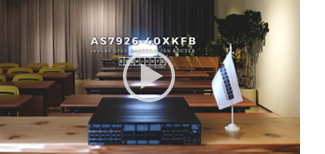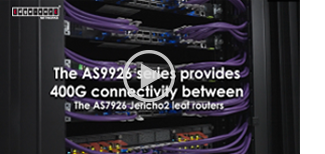Edgecore Best-in-Class, Scalable Core and Edge Network Solution for Next Generation Service Provider Infrastructure
|
Increasing mobile buildouts and new 5G deployments will necessitate upgrades of the current service provider network. Mobile operators are looking for a network solution with a higher scalability, higher reliability, with support of PTPv2 and SyncE to meet latest requirements. With network disaggregation, telecom service providers can gain the flexibility for exponential improvement and growth needed to meet the demand surge for data by entering the era of 5G.
According to Telecom Infra Project (TIP), Disaggregated Distributed Backbone Router (DDBR) is a versatile device that can be deployed in IP core/backbone networks as an IP/MPLS core/edge routers (P/PE routers) or an Internet Gateway router (IGW). Its unique Disaggregated and Distributed Architecture helps to disjoint the innovation paths and moving away from costly platforms with efficient scalability and deterministic latency.
Compared to traditional routing solutions that are from a single vendor, a DDBR solution combines software and hardware from multiple vendors, allowing service providers to break vendor locked in and move to a new model that enables greater vendor choice, faster scale, and introduction of new services through modern cloud design.
Key Benefits:
1. Optimal Merchant Silicon Selection and Configuration
DDBR architecture comprises commercial network operating system, open hardware, and merchant silicon from silicon vendor. Each of the distributed components are disaggregated hardware, which are compatible with various open standard software. Operators can choose the most suitable software vendor to maximize the value and benefits for the application scenario.
2. Sharing of Hardware Resource
DDBR architecture can utilize the same open hardware infrastructure for multiple areas such as core, edge and internet GW. As a result, it will enable operators to optimize spare parts and units in the backbone networks, leading to reduction of capital cost on the solution.
|
.png) |
| |
| |
Edgecore is developing distributed disaggregated chassis systems based on Broadcom’s Jericho2 and Ramon switch ASICs - the Core Routers Series (COR series), that provide the required deep buffers, port density, and horizontal scale-out flexibility.
These new devices conform to Open Compute Project (OCP) specifications for a distributed disaggregated chassis, where a number of switch systems connected through fabric links operate as if they were a single logical router with 100G external I/O links. The 400G fabric links employ a cell-based protocol with fixed-size packets distributed across multiple fabric interfaces forming a redundant, non-blocking leaf-spine topology. With extensive scalability, the distributed disaggregated chassis offers service providers the ideal solution as they strive to keep ahead of the growing bandwidth demands in their aggregation networks. And provide service providers the flexibility to expand their network as required.
|
| |
Edgecore Core Router - COR Series
|
| |
|
.png)
• 24 x 400G QSFP-DD Fabric Ports
• Broadcom® DNX Ramon, 9.6 Tbps
• IEEE 1588v2 and SyncE
• Support Fabric Multicast and Multicast Load-balancing
|

• 40 x 100G QSFP28, 13 x 400G QSFPDD Fabric Ports
• Broadcom® DNX Jericho 2, 4.0 Tbps
• IEEE 1588v2 and SyncE
• Best For Internet Peering, or IP/MPLS Core
|
| |
|
.png) |
|
|
Edgecore DDBR (Disaggregated Distributed Backbone Router) Solution
|
.jpg) |
| |
.png) |
| |
|
|
|
|
| |
|
 |
 |
| |
|



.jpg)

.png)